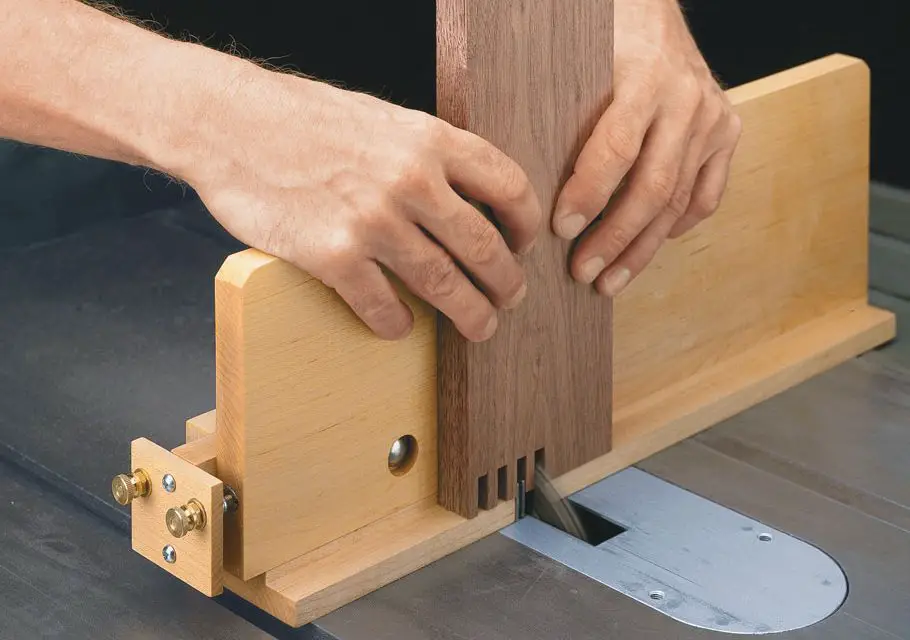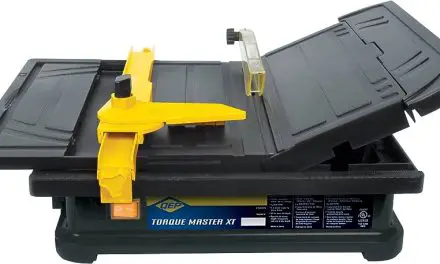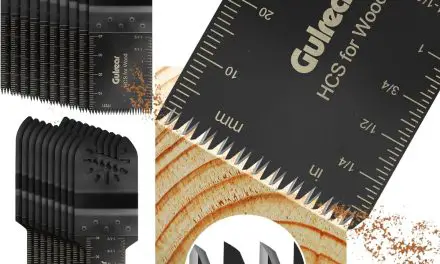For most woodworking tasks, a 10-inch table saw is the ideal size due to its versatility and availability of blades and accessories. However, a 12-inch table saw may offer a larger cutting capacity, but it can be more expensive and harder to find compatible blades and accessories.
Ultimately, the size of the table saw you need depends on the specific projects you plan to undertake and your budget constraints. Consider the depth of cut required for your projects and weigh the advantages and disadvantages of each size before making your decision.
Factors To Consider When Choosing Table Saw Size
When choosing the right size table saw for your woodworking projects, it’s important to consider the purpose and scope of your projects. First and foremost, determine the scale and complexity of the projects you primarily work on. This will help you understand the size of the table saw that can handle your projects effectively.
Additionally, it’s crucial to consider future growth and the types of projects you may undertake in the future. Choosing a table saw that can accommodate larger or more intricate projects will save you the hassle of upgrading later on. By carefully assessing the purpose and scope of your woodworking projects, you can make an informed decision on the size of table saw that suits your needs.
Understanding Table Saw Blade Sizes
Understanding Table Saw Blade Sizes Blade Diameter and Its Effect on Cutting Capacity The size of the table saw blade has a significant impact on its cutting capacity. The blade’s diameter determines the depth of cut it can make in a single pass.
The most common sizes for table saw blades are 10 inches and 12 inches. A 10-inch blade can typically cut up to 3 inches deep, while a 12-inch blade can cut up to 4 inches deep. In addition to the depth of the cut, the size of the blade also affects the stability of the saw.
A larger blade provides more stability, resulting in smoother and more accurate cuts. However, it’s important to note that larger blades require a more powerful motor to drive them. When choosing a table saw, consider the type of projects you’ll be working on and the depth of cut you’ll need.
Understanding the relationship between blade size and cutting capacity will help you make an informed decision.
Evaluating Table Saw Ripping Capacity
Understanding the concept of ripping is crucial in woodworking. Ripping refers to cutting wood along its length, parallel to the grain. The ripping capacity of a table saw is the distance between the blade and the fence, which determines the width of the material you can cut.
The importance of ripping capacity for woodworking cannot be overstated. It allows you to work with larger pieces of wood and create wider cuts. Factors that influence the required ripping capacity include the type of woodworking projects you undertake and the size of materials you commonly use.
It’s important to choose a table saw with a ripping capacity that meets your specific needs to ensure efficient and precise woodworking.
Analyzing Table Saw Fence System
The table saw fence system is an essential component that plays a crucial role in determining the size of the table saw you need. It directly impacts the stability and accuracy of your cuts. The fence system helps ensure that your cuts are straight and precise.
It also provides support for larger workpieces, allowing you to handle a wider variety of projects. When considering the size of your table saw, it’s important to assess the quality and functionality of the fence system. A reliable and sturdy fence system will enhance the performance of your table saw, regardless of its size.
So, it’s recommended to thoroughly understand the role of the fence system and choose one that meets your specific requirements.
Assessing Table Saw Weight And Portability
Assessing the weight and portability of a table saw is crucial to meet different needs. When considering workspace limitations, a compact and lightweight table saw is ideal. This allows for easy maneuverability when space is limited. On the other hand, stability is important for precision cuts, so a heavier table saw may be preferred for larger projects.
Portable table saws strike a balance between weight and stability, making them versatile for various work environments. Additionally, mobility requirements should also be taken into account. If the table saw needs to be frequently transported to job sites, a lightweight and portable option is highly recommended.
Overall, assessing the weight and portability of a table saw is essential to ensure optimal performance and convenience for different woodworking needs.
Exploring Table Saw Power Requirements
Find for a 12-inch table saw and generally more expensive compared to a 10-inch table saw. Additionally, a 12-inch table saw is more suitable for larger, professional woodworking projects, while a 10-inch table saw is versatile and suitable for most DIY and hobbyist projects.
When choosing the size of your table saw, consider the types of projects you will be working on and the thickness of the materials you will be cutting. Determine the appropriate motor power based on the size and nature of your projects, as different sizes and types of materials require different levels of power.
Understanding the power needs for woodworking projects will ensure that you choose the right table saw size and power for your specific needs.
Considering Safety Features In Table Saw Sizing
When considering safety features in table saw sizing, evaluating the presence of essential safety features is crucial. Table saws with safety features such as blade guards, anti-kickback pawls, and riving knives are highly recommended. These features play a significant role in reducing the risk of accidents and injuries.
Ensuring that the table saw you choose has these safety features is of utmost importance. Safety should always be a top priority when selecting the right table saw for your woodworking needs. By prioritizing safety, you can ensure a safer working environment and minimize the chances of accidents or mishaps occurring during your woodworking projects.
Making The Perfect Fit: Choosing The Right Table Saw Size
When it comes to choosing the right table saw size, there are several factors and considerations to keep in mind. First and foremost, you need to match your project needs with the table saw size. The most common table saw size is 10 inches, which allows for a decent depth of cut in a single pass.
However, the 8-inch table saw is also gaining popularity, offering sufficient cutting depth for smaller projects. Additionally, the 12-inch table saw is available for those who require even deeper cuts. It’s important to consider the types of materials you’ll be working with and the size of your workspace when selecting the ideal table saw size.
By carefully evaluating your project requirements, you can ensure that your table saw is the perfect fit for your woodworking needs.
Frequently Asked Questions For What Size Table Saw Do I Need?
What Is The Most Common Table Saw Size?
The most common table saw size is 10 inches, but the 8-inch table saw is also gaining popularity.
What Is the Difference Between 10 Inch And 12 Inch Table Saw?
The main difference between a 10-inch and a 12-inch table saw is the size of the blades and accessories. Blades for 10-inch saws are more common and less expensive. The arbor hole size is also different, with 10-inch saws having a 5/8″ arbor and 12-inch saws having a 1″ arbor.
The RPM difference is not significant.
What Can A 10-Inch Table Saw Cut?
A 10-inch table saw can cut various materials such as wood, plywood, and even some lighter metals.
Conclusion
When it comes to choosing the right table saw size for your woodworking projects, it’s important to consider your specific needs and requirements. The most common table saw size is 10 inches, which offers versatility and is suitable for most cutting tasks.
However, the 8-inch table saw is also gaining popularity due to its compact size and portability. The main difference between these two sizes is the depth of cut in a single pass. It’s worth noting that when opting for a 12-inch table saw, it can be more challenging and expensive to find blades and accessories.
The 12-inch saw has a larger arbor hole, requiring specialized equipment. It’s essential to consider these factors and evaluate the availability and cost of additional components. Ultimately, the size of the table saw you choose should align with your specific woodworking needs, budget, and available space.
By carefully considering these factors, you can make an informed decision and ensure that your table saw meets your requirements and enhances your woodworking experience.



















